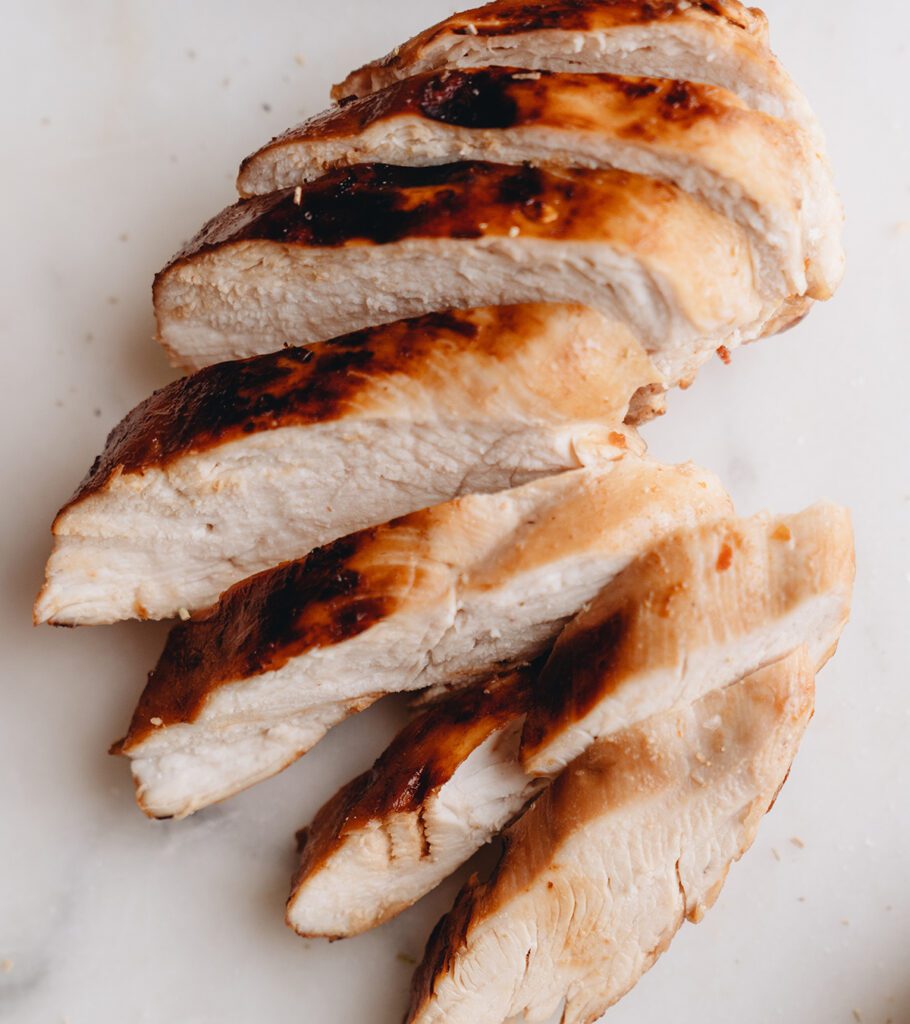How To Serve Chicken

When it comes to protein foods, chicken is often a family favourite. It is also a more affordable cut of meat compared to red meat and has a more mild flavour that many kids like. However, chicken can be dry, it can have bones….and can babies eat the skin? Let us run you through everything you need to know about introducing chicken to your bub.
Nutrition:
A great protein option to start including in your bub’s diet when they start solids, as chicken offers a lot when it comes to nutrition. Chicken contain B vitamins, zinc, choline, and selenium. Chicken also has iron, which may surprise some people as often iron is associated with red meat. The iron content is much lower than red meat though, with chicken thigh having about 1/3 of the iron found it red meat.
The breast meat has slightly less again. However, chicken liver is very high in iron, but also Vitamin A which can be toxic in large amounts, so if you are thinking of including it go and read our liver article first (link here). As iron is so important when starting solids, anywhere you can include it in bub’s diet is great.
Is It An Allergen:
Chicken is not a top 9 allergen, so there is no need to introduce it in any special way.
How To Serve It:
Chicken can be tough and doesn’t break apart easily in the mouth without a good amount of chewing. For this reason, it can be a choking hazard for babies. Cooking the meat in liquid and choosing a thigh or meat on the bone is good ways to help keep the meat moist.
The way you prepare and offer chicken will depend on how comfortable you feel with solids and if you are doing BLW or purees to start.
Chicken skin is safe to offer babies, but the texture can make it difficult for them to eat it. Small amounts cut up and with the rest of the meat is fine.
6-9 months
- If you’re doing finger foods/BLW then go big! The bigger the better. Try a chicken drumstick or a strip of moist breast or thigh meat. If you’re serving the whole drumstick watch out for the knuckle or bits of cartilage and always supervise when eating.
- Strips should be the size of several fingers, so they are easy to pick up and less likely to have small pieces break off.
- Small pieces at this age are hard to move around the mouth and more likely to be a choking risk.
- If you’re doing a gradual texture increase from puree, then just adjust the chicken to suit where your little one is at. You can blend to make it into a puree or fork mash
- Chicken mince is a good texture and can be used to make meat balls, chicken nuggets or koftas
- Avoid small chunks, cubes and dry chicken.

9-12 months
- As bub learns to bite, tear and chew food as they move toward the age of 1 you can start to offer small strip and pieces of chicken
- Strips of breast or thigh the size of your thumb or one finger
- Finely shredded
- Thinly sliced
- Still avoid cubes/pieces that are blueberry to grape size until they are confident chewers

12+ months
- As your little one really masters the art of chewing, you can move to bite size pieces
- Always supervise
- Model chewing and eating to help them get the hang of it

Serving Ideas:
- Finely dice or shred your chicken and add through yogurt or our Hemp Seed Pesto. This freezes well and is a great (and quick) addition to pasta, toast and roast veggies.
- Roast chicken and veggies (we love a one tray bake! Chicken features in many of our recipes.)
- Add to puree
- Add to pasta or risotto
- Try making our home-made Chicken Bites (aka nuggets)

Responses